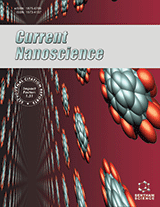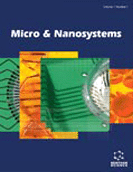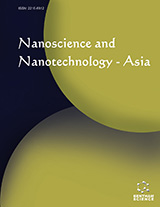Abstract
The ring-opening polymerization of -caprolactone (CL), δ-valerolactone (VL), and trimethylene carbonate (TMC) was carried out with polypropylene glycol (PPG) as an initiator in the presence of the monomer activator HCl to synthesize various polyesterpoly( propylene glycol)-polyester triblock copolymers (polyester-PPG-polyester). The resultant polyester-PPG-polyester triblock copolymers had molecular weights close to theoretical values. The formation of polymeric micelles from these triblock copolymers in aqueous media was confirmed by NMR, dynamic light scattering, and fluorescence techniques. The critical micelle concentrations (CMC) of the polyester-PPG-polyester triblock copolymers ranged from 1.7 x 10-3 to 2.1 x 10-3 mg/mL. The partition equilibrium constants illustrated the hydrophobicities of the polyester cores of the polyester-PPG-polyester triblock copolymers. In conclusion, we confirmed that the polyester-PPG-polyester triblock copolymers formed micelles and hence may be potential hydrophobic drug carriers.
Keywords: Polypropylene glycol, polyesters, triblock copolymer, micelle, hydrophobicity, Ring-Opening Polymerization, Cyclic Ester Monomers, Monomer Activator
Current Nanoscience
Title: Ring-Opening Polymerization of Cyclic Ester Monomers by Poly(propylene glycol) in the Presence of Monomer Activator and Examination of Triblock Copolymer Solution Properties
Volume: 7 Issue: 6
Author(s): Jae Il Kim, Hwi Ju Kang, Doo Yeon Kwon, Bong Lee, Heung Jae Chun, Jae Ho Kim and Moon Suk Kim
Affiliation:
Keywords: Polypropylene glycol, polyesters, triblock copolymer, micelle, hydrophobicity, Ring-Opening Polymerization, Cyclic Ester Monomers, Monomer Activator
Abstract: The ring-opening polymerization of -caprolactone (CL), δ-valerolactone (VL), and trimethylene carbonate (TMC) was carried out with polypropylene glycol (PPG) as an initiator in the presence of the monomer activator HCl to synthesize various polyesterpoly( propylene glycol)-polyester triblock copolymers (polyester-PPG-polyester). The resultant polyester-PPG-polyester triblock copolymers had molecular weights close to theoretical values. The formation of polymeric micelles from these triblock copolymers in aqueous media was confirmed by NMR, dynamic light scattering, and fluorescence techniques. The critical micelle concentrations (CMC) of the polyester-PPG-polyester triblock copolymers ranged from 1.7 x 10-3 to 2.1 x 10-3 mg/mL. The partition equilibrium constants illustrated the hydrophobicities of the polyester cores of the polyester-PPG-polyester triblock copolymers. In conclusion, we confirmed that the polyester-PPG-polyester triblock copolymers formed micelles and hence may be potential hydrophobic drug carriers.
Export Options
About this article
Cite this article as:
Il Kim Jae, Ju Kang Hwi, Yeon Kwon Doo, Lee Bong, Jae Chun Heung, Ho Kim Jae and Suk Kim Moon, Ring-Opening Polymerization of Cyclic Ester Monomers by Poly(propylene glycol) in the Presence of Monomer Activator and Examination of Triblock Copolymer Solution Properties, Current Nanoscience 2011; 7 (6) . https://dx.doi.org/10.2174/157341311798220790
| DOI https://dx.doi.org/10.2174/157341311798220790 |
Print ISSN 1573-4137 |
| Publisher Name Bentham Science Publisher |
Online ISSN 1875-6786 |
 2
2
- Author Guidelines
- Bentham Author Support Services (BASS)
- Graphical Abstracts
- Fabricating and Stating False Information
- Research Misconduct
- Post Publication Discussions and Corrections
- Publishing Ethics and Rectitude
- Increase Visibility of Your Article
- Archiving Policies
- Peer Review Workflow
- Order Your Article Before Print
- Promote Your Article
- Manuscript Transfer Facility
- Editorial Policies
- Allegations from Whistleblowers






















